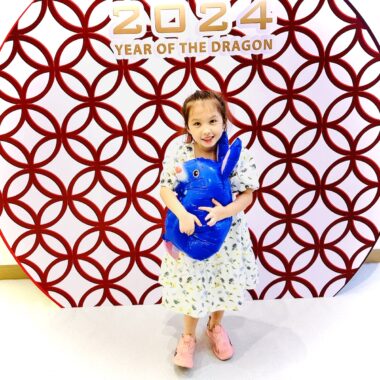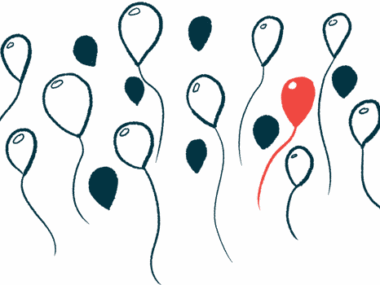On Rare Disease Day, we must turn awareness into action
Connecting with the larger rare community enables us to achieve our goals
Written by |

Glow sticks danced in the air as I snapped pictures of us in our striped socks. The fun day was my family’s first event dedicated to rare disease awareness, but while it made for great photos, it wasn’t a day of action for us. We were still newbies at that endeavor, though we were experts at living with a rare disease.
Five years ago, I had never heard of rare diseases, let alone the awareness event we’d eventually participate in. Once my daughter, Rylae-Ann, was diagnosed with aromatic l-amino acid decarboxylase (AADC) deficiency, every day became dedicated to battling her rare disease. At that point, though, we weren’t ready to take the next bold step: publicly advocating for attention and resources, and helping our community get the treatments we so desperately wanted. The dedicated awareness event helped us fill this gap.
Since 2008, Rare Disease Day has been held annually on the last day of February to raise awareness and advocate for people with rare conditions. Every four years, an extra day is added to the Gregorian calendar to keep it in sync with the seasons, making this year’s observance on Feb. 29 particularly special.
A community within a community
The AADC deficiency community is very small. There have been about 135 cases reported since 1990, but the true number may be higher. More families are being discovered with improved testing, but patients still make up an infinitesimally small portion of the world’s population. And of the total discovered cases, only a few families will actively engage with the community.
I was one of these wallflower members for the first three years after my daughter’s diagnosis. As a parent, it takes time to process that your child’s rare genetic disorder may seriously impair or even shorten their life. On top of that, there’s still the reality of managing their care and all your other life responsibilities.

Rylae-Ann and her parents created a rare disease event for children to make progress and for parents to learn. (Photo by Richard E. Poulin III)
Taking a stance on the world stage is easier with a larger group of people. The small AADC deficiency community doesn’t have that luxury, and many other disease communities are in a similar situation. That is why it’s essential to unite with the much larger rare community.
There are thousands of rare diseases. In the U.S., this means that 1 in 10 Americans will have a rare disease, or about one person per full elevator ride. Together, we have a louder voice and accomplish large tasks a lot faster.
Turning social media attention into meaningful action
The yearly Rare Disease Day campaign is filled with a lot of fun and fanfare. Landmarks light up with colorful displays, people wear striped socks, and social media is filled with #RareDiseaseDay. This is all wonderful, and I’m not trying to minimize its effect. In fact, I want to see more of it and would love to join in.
However, it’s important to remember that awareness is only a part of the mission. Awareness needs to be transferred into meaningful action, such as legislation that allocates more resources to rare disease families, funding for research, and faster approval of lifesaving treatments.
I love what social media has done for our community, but simultaneously, the platforms inundate people with information. There are other great causes competing for attention, dubious health claims with false promises, and cat videos all vying for views. My family will continue our social media presence, but also be mindful of dedicated efforts toward action.

Rylae-Ann attends a rare disease event during Chinese New Year, which her parents used on social media for rare disease awareness. (Photo by Richard E. Poulin III)
Making connections face-to-face
The world before social media required organizations to put boots on the ground, contact people directly, and form relationships. You lose some of that through the internet. The success of our nonprofit, Teach RARE, comes from connecting directly with parents and organizations.
We plan to do more in 2024 by creating and attending events. We will continue to advocate for gene therapy approval by the U.S. Food and Drug Administration and to create events that support AADC deficiency families, but we will also continue to support other rare disease communities.
Growing the rare disease movement
Early in our journey, my wife, Judy, and I realized we could better support Rylae-Ann if we connected with larger organizations. They had more resources and people who could help. Other rare disease and special needs groups often dealt with similar symptoms, so we learned to adapt what we learned to meet our daughter’s needs.
Now in her third year of life post-gene therapy, Rylae-Ann is making great progress. Before gene therapy, Judy and I dedicated our entire day to caring for her and traveling to hospitals, either for emergency care or testing. Since gene therapy, we’ve lived a relatively normal parent life, and our daughter is an independent kindergartener who loves to swim, ride horses, and climb.

Richard and Judy Poulin deliver a presentation about AADC deficiency at the Congress of Child Neurology in Bangkok, Thailand, in 2023. (Courtesy of Richard E. Poulin III)
With the blessing of our daughter’s improvements, we want to continue to support other caregivers. AADC deficiency families will always take priority, but a caregiver’s struggle is independent of the acronym that defines the disease. Contributing to the rare disease community grows our entire network.
Some families may not be ready to post on social media or parade around in striped socks that beg for engagement. However, all of us can connect with our local community. With hundreds of millions of people living with rare diseases worldwide, we can quickly accomplish our goals.
Rare Disease Day is every day for our family, so we plan to create and join more events to connect with caregivers and extend awareness beyond our community, all in an effort to enact meaningful change.
Note: AADC News is strictly a news and information website about the disease. It does not provide medical advice, diagnosis, or treatment. This content is not intended to be a substitute for professional medical advice, diagnosis, or treatment. Always seek the advice of your physician or other qualified health provider with any questions you may have regarding a medical condition. Never disregard professional medical advice or delay in seeking it because of something you have read on this website. The opinions expressed in this column are not those of AADC News or its parent company, Bionews, and are intended to spark discussion about issues pertaining to aromatic l-amino acid decarboxylase deficiency.







Leave a comment
Fill in the required fields to post. Your email address will not be published.